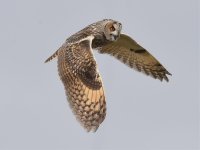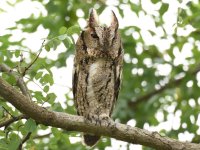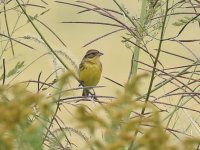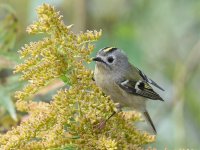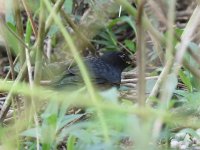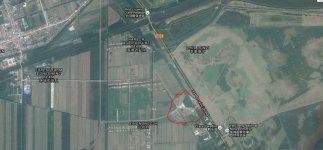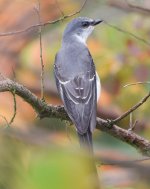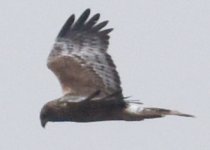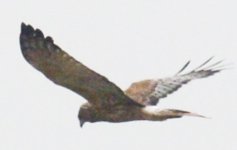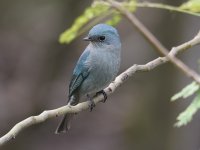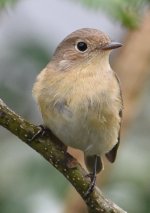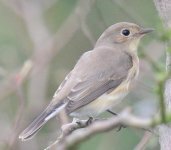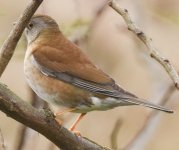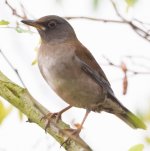mjgrunwell
Well-known member
Yangshan island and Nanhui coast
Started at Yangshan Island, walked with Stephan and Xueping from the yellow “temple mount” area across to the rubbish dump valley and back. Overall rather quiet, best were the first Daurian redstarts and bluetails and some nice rubythroats. Then drove to Nanhui and checked all the clumps along the sea wall. The highlight was good views of a male davisoni sibe thrush. We also spent a short time being suffocated by passing dirt trucks whilst scoping distant BF spoonbill and dal pel at the main pool. This main pool, an important wintering site for the endangered BF spoonbill has been allowed (deliberately?) to become degraded, it is due for complete destruction in a few years. The wind today was a light westerly, I am sure that what we need is a good northerly.
Complete list, Saturday 10th October 2015, Yangshan island and Nanhui coast
Pintail, 2 on the mudflats
Dabchick, few
Black-faced spoonbill,6 on big pool at Dongtan
BC Night heron, few
CPH, 1
Cattle egret, few
Grey Heron, common
Great white egret, 40+ on dowitcher pool
Intermediate egret, 20+
Little egret, 100+
Dalmatian pelican, usual individual asleep near the BF spoonbills
Kestrel, 1
Amur falcon, 1 male over YI early and a female/imm cavorting with a kestrel on YI
Black-eared kite, 1 over YI
Moorhen, few
BW stilt, few
Pied avocet, 8
Black-tailed godwit, 10+
Spotted redshank, 15+
Greenshank, 25+
No gulls or terns noted today
Red turtle dove, 1 female
Spotted dove, few
OTD, few
Common kingfisher, 1
Bull-headed shrike, 2 imms
Brown shrike, 1
LT shrike, few
HC drongo, one imm on YI
Magpie, few
Eastern great tit, 2
Yellow-bellied tit, 1 male on YI
Barn swallow, 30+
Plain prinia, few
Chinese bulbul, few
BF Bush warbler, 1
Dusky warbler, 1
Radde’s warbler, 2
Pallas’s warbler, 5+
YB warbler, 15+
Arctic warbler, 4+
Eastern crowned warbler, 1
Crested myna, few
Siberian thrush, the birds a few weeks ago on the Jiangsu coast were sibirica (on the basis of their strong vent markings). Today excellent views of a male in clump 1 that matched davisoni in Brazil
White’s thrush, 2+
Siberian rubythroat, 2 males on YI
RF bluetail, the first of the autumn, 4+ today
Daurian redstart, the first of the autumn, everywhere, 30+ today
Swinhoe’s robin, 3+ today
Stejneger’s stonechat, 3+
Blue rock thrush, 6+
WT rock thrush, 2
Grey-streaked fly, 1
Asian brown fly, 7+
Mugimaki fly, 3+
Taiga fly, 4+
Blue and white fly, 12+
Scaly-breasted munia, small flock on YI
Eastern yellow wag, 3+
Grey wagtail, 2
Leucopsis white wag, 6+
Meadow bunting, a male singing with a female on YI, presumed resident birds
BF bunting, 1+
Out again next weekend, here’s hoping for a northerly blow and an arrival of thrushes and buntings.
Started at Yangshan Island, walked with Stephan and Xueping from the yellow “temple mount” area across to the rubbish dump valley and back. Overall rather quiet, best were the first Daurian redstarts and bluetails and some nice rubythroats. Then drove to Nanhui and checked all the clumps along the sea wall. The highlight was good views of a male davisoni sibe thrush. We also spent a short time being suffocated by passing dirt trucks whilst scoping distant BF spoonbill and dal pel at the main pool. This main pool, an important wintering site for the endangered BF spoonbill has been allowed (deliberately?) to become degraded, it is due for complete destruction in a few years. The wind today was a light westerly, I am sure that what we need is a good northerly.
Complete list, Saturday 10th October 2015, Yangshan island and Nanhui coast
Pintail, 2 on the mudflats
Dabchick, few
Black-faced spoonbill,6 on big pool at Dongtan
BC Night heron, few
CPH, 1
Cattle egret, few
Grey Heron, common
Great white egret, 40+ on dowitcher pool
Intermediate egret, 20+
Little egret, 100+
Dalmatian pelican, usual individual asleep near the BF spoonbills
Kestrel, 1
Amur falcon, 1 male over YI early and a female/imm cavorting with a kestrel on YI
Black-eared kite, 1 over YI
Moorhen, few
BW stilt, few
Pied avocet, 8
Black-tailed godwit, 10+
Spotted redshank, 15+
Greenshank, 25+
No gulls or terns noted today
Red turtle dove, 1 female
Spotted dove, few
OTD, few
Common kingfisher, 1
Bull-headed shrike, 2 imms
Brown shrike, 1
LT shrike, few
HC drongo, one imm on YI
Magpie, few
Eastern great tit, 2
Yellow-bellied tit, 1 male on YI
Barn swallow, 30+
Plain prinia, few
Chinese bulbul, few
BF Bush warbler, 1
Dusky warbler, 1
Radde’s warbler, 2
Pallas’s warbler, 5+
YB warbler, 15+
Arctic warbler, 4+
Eastern crowned warbler, 1
Crested myna, few
Siberian thrush, the birds a few weeks ago on the Jiangsu coast were sibirica (on the basis of their strong vent markings). Today excellent views of a male in clump 1 that matched davisoni in Brazil
White’s thrush, 2+
Siberian rubythroat, 2 males on YI
RF bluetail, the first of the autumn, 4+ today
Daurian redstart, the first of the autumn, everywhere, 30+ today
Swinhoe’s robin, 3+ today
Stejneger’s stonechat, 3+
Blue rock thrush, 6+
WT rock thrush, 2
Grey-streaked fly, 1
Asian brown fly, 7+
Mugimaki fly, 3+
Taiga fly, 4+
Blue and white fly, 12+
Scaly-breasted munia, small flock on YI
Eastern yellow wag, 3+
Grey wagtail, 2
Leucopsis white wag, 6+
Meadow bunting, a male singing with a female on YI, presumed resident birds
BF bunting, 1+
Out again next weekend, here’s hoping for a northerly blow and an arrival of thrushes and buntings.




